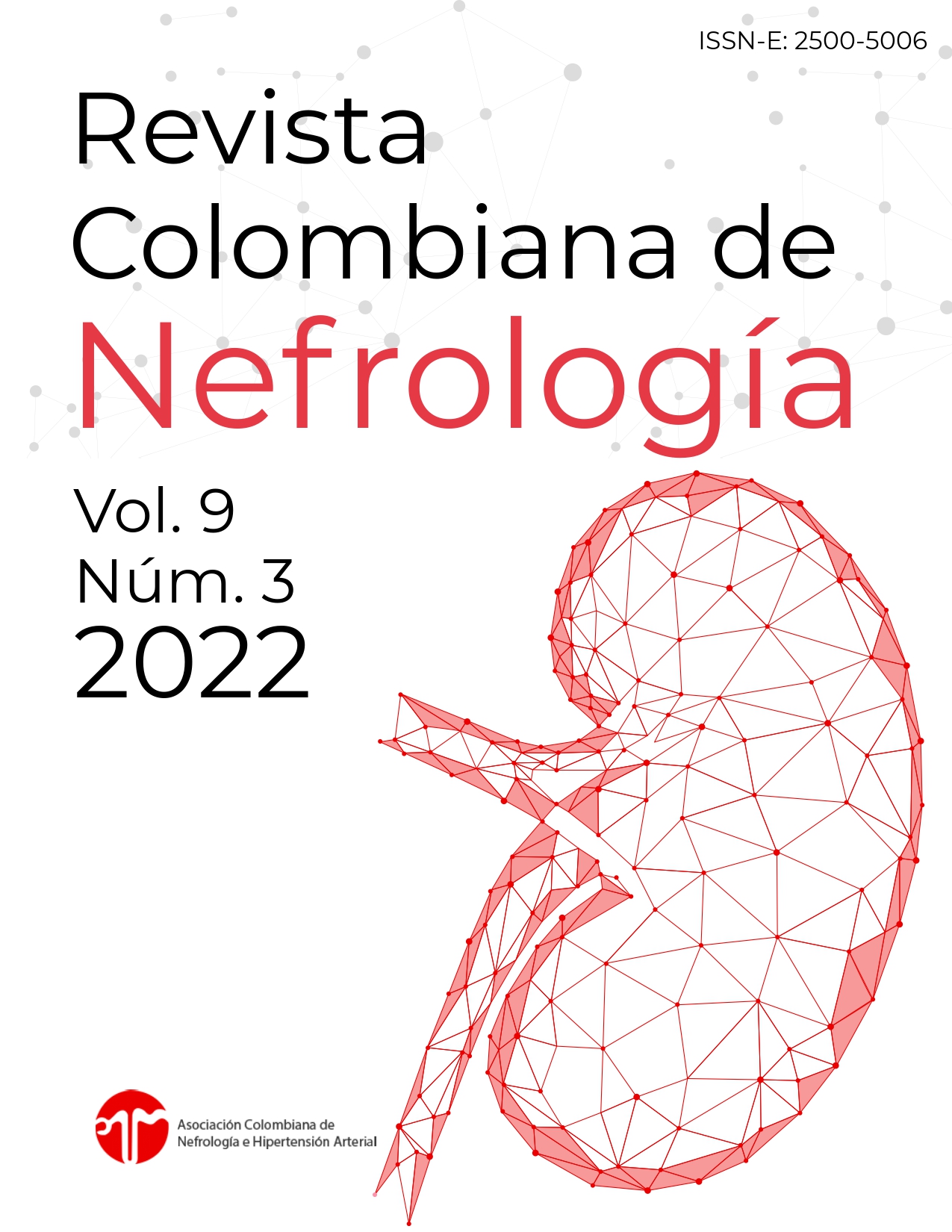Abstract
Introduction: Several commonly used chemotherapeutic agents can cause complete or partial Fanconi syndrome (FS). FS is a proximal tubulopathy that produces electrolyte and acid base disorders where there is loss of glucose, amino acids, calcium, phosphorus, potassium, uric acid and metabolic acidosis occurs due to loss of bicarbonate. FS is not usually reported, and the diagnosis is often misled.
Purpose: To highlight the importance of urinary and serum monitoring in patients undergoing chemotherapy, as well as describe the recent literature about the association between chemotherapeutic agents and partial or complete Fanconi syndrome.
Case presentation: A series of cases of pediatric oncology patients with preserved renal function is presented in which different manifestations of proximal tubular nephrotoxicity occurred secondary to chemotherapeutic agents such as antimetabolites, alkylating agents, and anthracyclines.
Discussion and conclusion: The spectrum of FS can range from a generalized or complete proximal tubulopathy to partial alterations in electrolyte reabsorption. The importance of serum and urinary monitoring should be recognized in patients with tumor lesions who will undergo chemotherapies with potentially nephrotoxic agents; the dosage, frequency and combination of chemotherapeutic agents should be taken into account, in order to prevent and treat the complications of renal toxicity including complete or partial SF.
References
Bramwell VH, Mouridsen HT, Santoro A, Blackledge G, Somers R, Verweij J, Dombernowsky P, Onsrud M, Thomas RS. Cyclophosphamide versus ifosfamide: a randomized phase II trial in adult soft-tissue sarcomas. The European Organization for Research and Treatment of Cancer [EORTC], Soft Tissue and Bone Sarcoma Group. Cancer Chemother Pharmacol. 1993;31(2):180-4. https://pubmed.ncbi.nlm.nih.gov/8453694/
Panezai MA, Owen C, Szerlip HM. Partial Fanconi syndrome induced by ifosfamide. Baylor Univ Med Cent Proc. 2019;32(1):73-4. https://doi.org/10.1080/08998280.2018.1536020
Buttemer S, Pai M, Lau KK. Ifosfamide induced Fanconi syndrome. Case Rep Dermatol. 2011;2011:bcr1020114950. https://doi.org/10.1136/bcr.10.2011.4950
Lee VW, Harris DC. Adriamycin nephropathy: A model of focal segmental glomerulosclerosis. Nephrology. 2011;16(1):30-8. https://doi.org/10.1111/j.1440-1797.2010.01383.x
Hosseinzadeh A, Goudarzi M, Fatemi I, Khodayar MJ, Mehrzadi S, Khalili HR, et al. Gemfibrozil attenuates doxorubicin induced toxicity in renal tissues of male rats by reducing the oxidative insult and inflammation. Biotech Histochem. 2020;95(7):532-9. https://doi.org/10.1080/10520295.2020.1730967
Kintzel PE. Anticancer drug-induced kidney disorders: Incidence, prevention and management. Drug Saf. 2001;24(1):19-38. https://doi.org/10.2165/00002018-200124010-00003
Fujieda M, Matsunaga A, Hayashi A, Tauchi H, Chayama K, Sekine T. Children’s toxicology from bench to bed - Drug-induced Renal Injury (2): Nephrotoxiciy induced by cisplatin and ifosfamide in children. J Toxicol Sci. 2009;34(2):251-8. https://doi.org/10.2131/jts.34.SP251
Ciarimboli G, Holle SK, Vollenbröcker B, Hagos Y, Reuter S, Burckhardt G, et al. New clues for nephrotoxicity induced by ifosfamide: Preferential renal uptake via the human organic cation transporter 2. Mol Pharm. 2011;8(1):270-9. https://doi.org/10.1021/mp100329u
Sofroniadou S, Revela I, Kouloubinis A, Makriniotou I, Zerbala S, Smirloglou D, et al. Ethanol combined with heparin as a locking solution for the prevention of catheter related blood stream infections in hemodialysis patients: A prospective randomized study. Hemodial Int. 2017;21(4):498-506. https://doi.org/10.1111/hdi.12524
McDonald BR, Kirmani S, Vasquez M, Mehta RL. Acute renal failure associated with the use of intraperitoneal carboplatin: A report of two cases and review of the literature. Am J Med. 1991;90(1):386-91. https://doi.org/10.1016/0002-9343(91)90582-I
Oun R, Moussa YE, Wheate NJ. The side effects of platinum-based chemotherapy drugs: A review for chemists. Dalt Trans. 2018;47(19):6645-53. https://doi.org/10.1039/C8DT00838H
Nicolaysen A. Nephrotoxic Chemotherapy Agents: Old and New. Adv Chronic Kidney Dis. 2020;27(1):38-49. https://doi.org/10.1053/j.ackd.2019.08.005
Perazella MA, Moeckel GW. Nephrotoxicity from chemotherapeutic agents: Clinical manifestations, pathobiology, and prevention/therapy. Semin Nephrol. 2010;30(6):570-81. http://dx.doi.org/10.1016/j.semnephrol.2010.09.005
Howard SC, McCormick J, Pui C, Buddington RK, Harvey RD. Preventing and Managing Toxicities of High?Dose Methotrexate. Oncologist. 2016;21(12):1471-82. https://doi.org/10.1634/theoncologist.2015-0164
Green MR, Chamberlain MC. Renal dysfunction during and after high-dose methotrexate. Cancer Chemother Pharmacol. 2009;63(4):599-604. https://doi.org/10.1007/s00280-008-0772-0
Widemann BC, Adamson PC. Understanding and Managing Methotrexate Nephrotoxicity. Oncologist. 2006;11(6):694-703. https://doi.org/10.1634/theoncologist.11-6-694
Wu Q, Li W, Zhao J, Sun W, Yang Q, Chen C, et al. Apigenin ameliorates doxorubicin-induced renal injury via inhibition of oxidative stress and inflammation. Biomed Pharmacother. 2021;137(diciembre 2020):111308. https://doi.org/10.1016/j.biopha.2021.111308
Afsar T, Razak S, Almajwal A, Al-Disi D. Doxorubicin-induced alterations in kidney functioning, oxidative stress, DNA damage, and renal tissue morphology; Improvement by Acacia hydaspica tannin-rich ethyl acetate fraction. Saudi J Biol Sci. 2020;27(9):2251-60. https://doi.org/10.1016/j.sjbs.2020.07.011
Li A, Zhang W, Zhang L, Liu Y, Li K, Du G, et al. Elucidating the time-dependent changes in the urinary metabolome under doxorubicin-induced nephrotoxicity. Toxicol Lett. 2020;319:204-12. https://doi.org/10.1016/j.toxlet.2019.11.020

This work is licensed under a Creative Commons Attribution-NonCommercial-NoDerivatives 4.0 International License.


